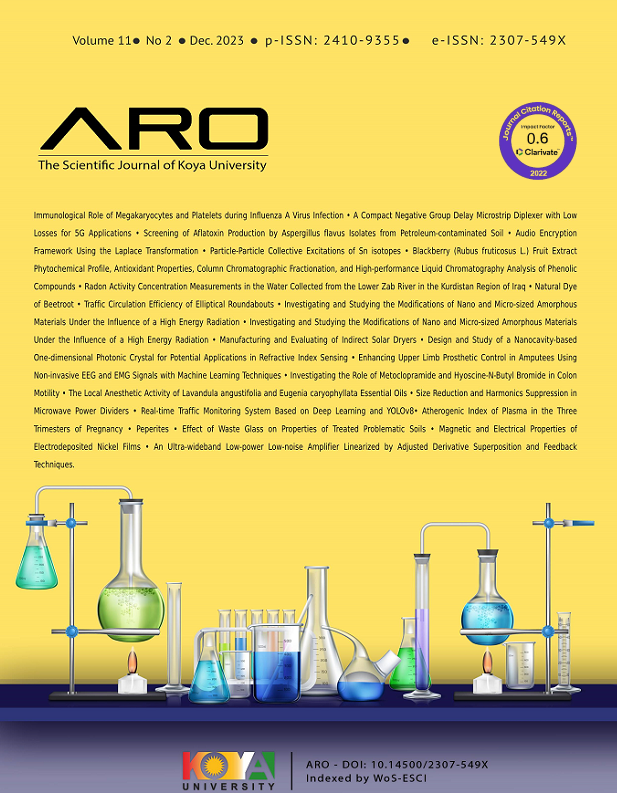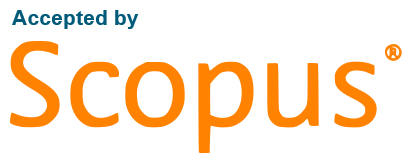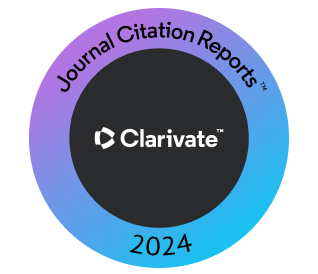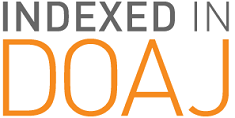Real-time Traffic Monitoring System Based on Deep Learning and YOLOv8
DOI:
https://doi.org/10.14500/aro.11327Keywords:
Computer vision, Deep learning, Object detection, Traffic monitoring, YOLOv8Abstract
Computer vision applications are important nowadays because they provide solutions to critical problems that relate to traffic in a cost-effective manner to reduce accidents and preserve lives. This paper proposes a system for real-time traffic monitoring based on cutting-edge deep learning techniques through the state-of-the-art you-only-look-once v8 algorithm, benefiting from its functionalities to provide vehicle detection, classification, and segmentation. The proposed work provides various important traffic information, including vehicle counting, classification, speed estimation, and size estimation. This information helps enforce traffic laws. The proposed system consists of five stages: The preprocessing stage, which includes camera calibration, ROI calculation, and preparing the source video input; the vehicle detection stage, which uses the convolutional neural network model to localize vehicles in the video frames; the tracking stage, which uses the ByteTrack algorithm to track the detected vehicles; the speed estimation stage, which estimates the speed for the tracked vehicles; and the size estimation stage, which estimates the vehicle size. The results of the proposed system running on the Nvidia GTX 1070 GPU show that the detection and tracking stages have an average accuracy of 96.58% with an average error of 3.42%, the vehicle counting stage has an average accuracy of 97.54% with a 2.46% average error, the speed estimation stage has an average accuracy of 96.75% with a 3.25% average error, and the size estimation stage has an average accuracy of 87.28% with a 12.72% average error.
Downloads
References
AlNujaidi, K., AlHabib, G., and AlOdhieb, A., 2023. Spot-the-camel: Computer vision for safer roads. International Journal of Artificial Intelligence and Applications (IJAIA), 14(2), pp.1-10. DOI: https://doi.org/10.5121/ijaia.2023.14201
Alzubaidi, L., Zhang, J., Humaidi, A.J., Al-Dujaili, A., Duan, Y., Al-Shamma, O., Santamaría, J., Fadhel, M.A., Al-Amidie, M., and Farhan, L., 2021. Review of deep learning: Concepts, CNN architectures, challenges, applications, future directions. Journal of Big Data, 8(1), p.53. DOI: https://doi.org/10.1186/s40537-021-00444-8
Awotunde, J.B., Jimoh, R.G., Imoize, A.L., Abdulrazaq, A.T., Li, C.T., and Lee, C.C., 2023. An enhanced deep learning-based deepfake video detection and classification system. Electronics, 12(1), p.87. DOI: https://doi.org/10.3390/electronics12010087
Berna, S.J., Swathi S., Devi, C.Y., and Varalakshmi, D., 2020. Distance and speed estimation of moving object using video processing. International Journal for Research in Applied Science and Engineering Technology (IJRASET), 8(5), pp.2605-2612. DOI: https://doi.org/10.22214/ijraset.2020.5433
Costa, L.R., Rauen, M.S., and Fronza, A.B., 2020. Car speed estimation based on image scale factor. Forensic Science International, 310, p.110229. DOI: https://doi.org/10.1016/j.forsciint.2020.110229
Dias, T., Fonseca, T., Vitorino, J., Martins, A., Malpique, S., and Praça, I., 2023. From Data to Action: Exploring AI and IoT-Driven Solutions for Smarter Cities. Springer, Cham. DOI: https://doi.org/10.1007/978-3-031-38333-5_5
Djukanović, S., Bulatović, N., and Čavor, I., 2022. ADataset for Audio-video Based Vehicle Speed Estimation. Cornell University, New York, pp.1-4.
Farooq, M.S., and Kanwal, S., 2023. Traffic Road Congestion System using by the Internet of Vehicles (IoV), Networking and Internet Architecture, Cornell University, New York, arXiv:2306.00395, pp.1-9.
Gupta, U., Kumar, U., Kumar, S., Shariq, M., and Kumar, R., 2022. Vehicle speed detection system in highway. International Research Journal of Modernization in Engineering Technology and Science, 4(5), pp.406-411.
Hakim, H., and Fadhil, A., 2021. Survey: Convolution neural networks in object detection. Journal of Physics: Conference Series, 1804, pp.1-18. DOI: https://doi.org/10.1088/1742-6596/1804/1/012095
Hussain, M., 2023. YOLO-v1 to YOLO-v8, the rise of YOLO and its complementary nature toward digital manufacturing and industrial defect detection. Machines, 11, p.677. DOI: https://doi.org/10.3390/machines11070677
Jocher, G., Chaurasia, A., and Qiu, J., 2023. YOLO by Ultralytics (Version 8.0.0). Available from: https://github.com/ultralytics/ultralytics [Last accessed on 2023 Aug 07].
Jocher, G., Chaurasia, A., and Qiu, J., 2023. YOLOv8 Docs by Ultralytics (Version 8.0.0).Available from: https://docs.ultralytics.com [Last accessed on 2023 Aug 07].
King, R., 2023. Github Repo MMYOLO. Available from: https://github.com/open-mmlab/mmyolo/tree/main/configs/yolov8 [Last accessed on 2023 Aug 07].
Koyuncu, H., and Koyuncu, B., 2018. Vehicle speed detection by using camera and image processing software. The International Journal of Engineering and Science (IJES),7(9), pp.64-72.
Lin, C.J., Jeng, S.Y., and Lioa, H.W., 2021. A real-time vehicle counting, speed estimation, and classification system based on virtual detection zone and YOLO. Mathematical Problems of Applied System Innovations for IoT Applications, 2021, p.1577614. DOI: https://doi.org/10.1155/2021/1577614
Liu, C., Huynh, D., Sun, C., Reynolds, M., and Atkinson, S., 2021. A vision-based pipeline for vehicle counting, speed estimation, and classification. IEEE Transactions on Intelligent Transportation Systems, 22(12), pp.7547-7560. DOI: https://doi.org/10.1109/TITS.2020.3004066
Raheem, F.A., and AbdulHussain, A.A., 2020. Deep learning convolution neural networks analysis and comparative study for static alphabet ASL hand gesture recognition. Journal of Xidian University, 14(4), pp.1871-1881. DOI: https://doi.org/10.37896/jxu14.4/212
Sarker, I.H., 2021. Deep learning: Acomprehensive overview on techniques, taxonomy, applications and research Directions. SN Computer Science,2, p.420. DOI: https://doi.org/10.1007/s42979-021-00815-1
Shihab, M.R., Ghani, R.F., and Mohammed, A.J., 2022. Machine learning techniques for vehicle detection. Iraqi Journal of Computers, Communications, Control and Systems Engineering (IJCCCE), 22(4), pp.1-12. DOI: https://doi.org/10.33103/uot.ijccce.22.4.1
WHO, 2018. Global Status Report on Road Safety 2018. World Health Organization, Geneva.Yasir, M.A., and Ali, Y.H., 2021. Review on real time background extraction: Models, applications, environments, challenges and evaluation approaches. International Journal of Online and Biomedical Engineering, 17(2), pp.37-68. DOI: https://doi.org/10.3991/ijoe.v17i02.18013
Zhang, Y., Sun, P., Jiang, Y., Yu, D., Weng, F., Yuan, Z., Luo, P., Liu, W., and Wang, X., 2022. ByteTrack: Multi-Object Tracking by Associating Every Detection Box, Computer Vision and Pattern Recognition, Cornell University, New York, arXiv:2110.06864, pp.1-14. DOI: https://doi.org/10.1007/978-3-031-20047-2_1
Downloads
Published
How to Cite
Issue
Section
License
Authors who choose to publish their work with Aro agree to the following terms:
-
Authors retain the copyright to their work and grant the journal the right of first publication. The work is simultaneously licensed under a Creative Commons Attribution License [CC BY-NC-SA 4.0]. This license allows others to share the work with an acknowledgement of the work's authorship and initial publication in this journal.
-
Authors have the freedom to enter into separate agreements for the non-exclusive distribution of the journal's published version of the work. This includes options such as posting it to an institutional repository or publishing it in a book, as long as proper acknowledgement is given to its initial publication in this journal.
-
Authors are encouraged to share and post their work online, including in institutional repositories or on their personal websites, both prior to and during the submission process. This practice can lead to productive exchanges and increase the visibility and citation of the published work.
By agreeing to these terms, authors acknowledge the importance of open access and the benefits it brings to the scholarly community.
Accepted 2023-10-25
Published 2023-11-16
















 ARO Journal is a scientific, peer-reviewed, periodical, and diamond OAJ that has no APC or ASC.
ARO Journal is a scientific, peer-reviewed, periodical, and diamond OAJ that has no APC or ASC.